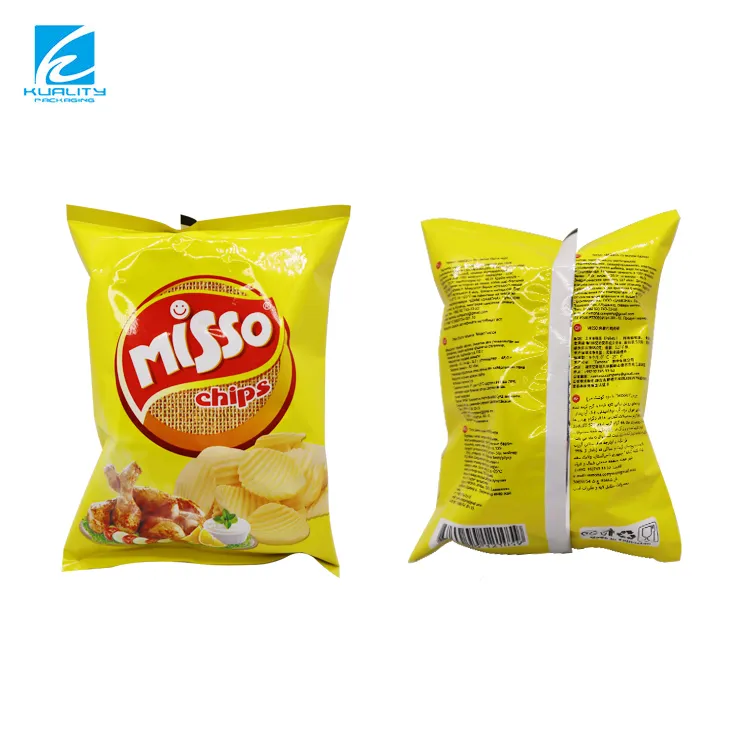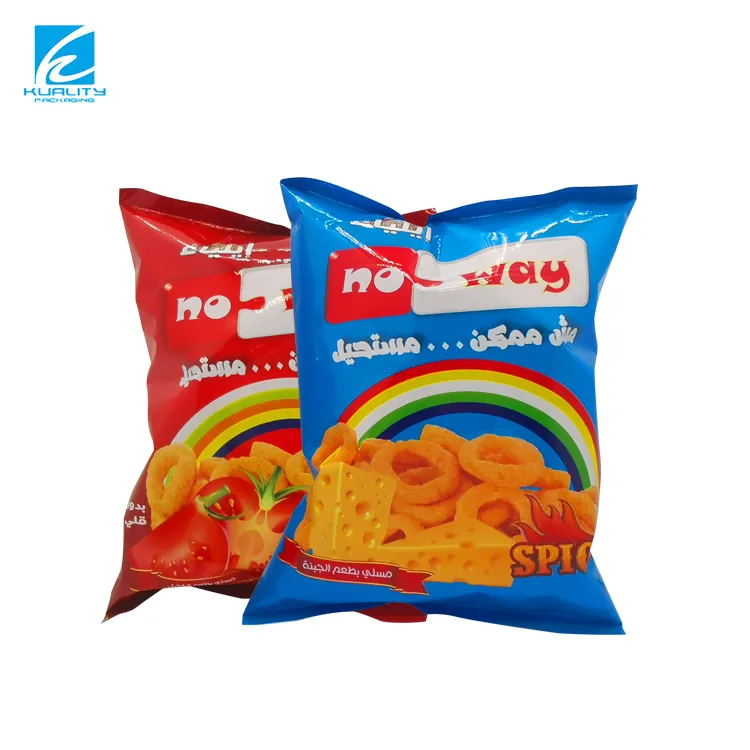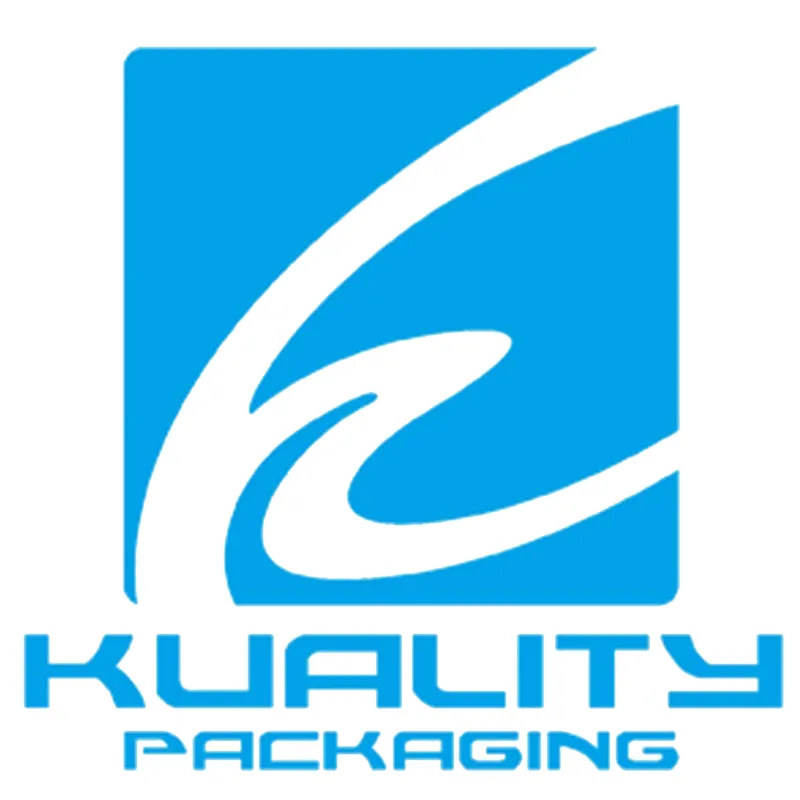
When you tear open a bag of potato chips, the crispy “pop” sound might feel like pure joy, but behind that moment lies a 30-year battle between food scientists, engineers, and environmentalists. That light, flexible bag is not only a marvel of snack food packaging but also a case study in how sustainable flexible packaging is evolving under the pressure of market trends, regulations, and consumer expectations.
Hos Huiyang Packaging, we believe every bag tells a story. As a flexible packaging manufacturer with decades of experience, today we reveal the engineering secrets, environmental innovations, and market logic behind the humble potato chip bag.
Material Selection: Balancing Preservation, Cost, and Environmental Impact
The Classic Structure: Reliable but Difficult to Recycle
Most traditional chip bags—like those from Lay’s or local brands—feature a composite structure of three layers:
- Outer layer: Printed PET (polyester) for aesthetics and print durability
- Middle layer: Aluminum foil (as thin as 9 microns), offering superior barrier protection against oxygen, light, and moisture
- Inner layer: Polyethylene (PE) for heat sealing and oil resistance
This structure ensures a 12-month shelf life and great product protection. As one packaging technician once said, “Without aluminum foil, your chips would go stale in 12 days.”
But here’s the catch: these materials are difficult to separate and therefore nearly impossible to recycle. Most of them end up being incinerated or landfilled. Under the EU’s Single-Use Plastics Directive (SUP), composite films like this face rising taxes and regulatory pressure.
At Huiyang Packaging, we still provide aluminum-based flexible films, but we now help brands transition toward more eco-conscious alternatives.



The Rise of PLA and Biodegradable Materials
One of the most exciting developments in sustainable snack packaging is the use of PLA (polylactic acid), derived from corn starch. It’s compostable in industrial conditions within 90 days.
Japanese brand Calbee experimented with PLA for potato chip bags but encountered moisture issues. Their workaround? Adding a nano silicon oxide coating to enhance water vapor barrier—effective, but costly (up to 40% price increase per pack).
More radical innovations include seaweed-based coatings and paper-laminated outer layers. These materials show promising environmental benefits, but are not yet suited for high-speed mass production.
At Huiyang Packaging, we help clients trial custom flexible packaging solutions using biodegradable films like PLA or paper/film hybrids. We focus on balancing performance with processability.
The Mono-Material Middle Ground
Recently, brands like Lay’s have adopted all-PE (polyethylene) structures, which are fully recyclable and meet many regulatory requirements. However, PE lacks the barrier performance of aluminum or high-performance PET.
How do brands compensate? By injecting 30% more nitrogen into the bag! This maintains crispness while preserving recyclability. At Huiyang Packaging, we provide recyclable PE/PE structures compatible with horizontal and vertical form-fill-seal (HFFS/VFFS) lines.
Thickness: The Business Behind Microns
Thinner Isn’t Always Better
Most chip bags fall within the 60–90 micron thickness range—about the diameter of human hair. Attempts to reduce thickness below 50 microns often lead to higher damage rates during transit, ultimately raising costs due to returns and product loss.
That “airy” feeling when you squeeze a potato chip bag? It’s part of nitrogen-flush packaging technology, which increases internal pressure, enhancing impact resistance without increasing film thickness.
Environmental Materials Need Thickness Compensation
Bioplastics like PLA are naturally less strong. To maintain performance, manufacturers often increase thickness to 120 microns or more. That may sound minor, but in mass production, it adds weight and cost.
A brand using thicker PLA film calculated that logistics costs increased by 0.12 RMB per bag. Across 100 million units, that’s 12 million RMB in added cost—a significant trade-off for sustainability.
Paper-based chip bags (with moisture barriers) can go as thick as 250 microns. While this feels “premium” to consumers, it’s often a technical compromise to meet performance goals.
Structural Design Beats Thickness
Some brands like Pringles avoid soft packaging altogether. Their 0.4 mm paper cans rely on cylindrical shape and internal support rings for strength, not sheer thickness.
At Huiyang Packaging, we offer custom structural design consultation for both pouch-based and rigid flexible packaging formats, helping brands reduce material use without sacrificing performance.
Trends in Potato Chip Packaging (2025 & Beyond)
Regulations Are Getting Stricter
The EU is doubling the tax on composite plastic packaging in 2025. If your packaging isn’t recyclable or compostable, you’ll pay significantly more. The same applies in Canada and parts of Southeast Asia.
Huiyang Packaging offers consulting and trial production services to help clients preempt regulatory risks with future-ready flexible packaging solutions.
Technological Innovation
Nano Barrier Coatings: Silicon oxide coatings now offer oxygen barrier levels comparable to aluminum foil—mass production expected by 2025.
Edible Films: In R&D by companies like LOTTE, some seaweed-based films are designed to be eaten along with the product. Great for novelty markets!
Consumer Preferences Are Evolving
Surveys show Gen Z consumers are willing to pay up to 23% more for eco-friendly snack packaging, as long as the design looks good.
“Carbon Footprint QR Codes” that track the lifecycle of packaging are gaining popularity, especially on platforms like Xiaohongshu in China.
Packaging is becoming a brand’s silent ambassador, not just a container.
Real-World Cost Breakdown for Brand Decision-Makers
| Strategy | Material | Avg. Cost (RMB/pack) | Notes |
| Traditional Volume | Aluminum/PET/PE | 0.08 | Low cost, not recyclable |
| Mid-Range Upgrade | All-PE recyclable | 0.12 | Recyclable, needs nitrogen flush |
| High-End Sustainability | PLA + Paper | 0.35 | Avg.. Cost (RMB/pack) |
Huiyang Packaging provides tailored packaging strategies for each segment.
Final Thoughts: Packaging is a Human Experiment
Every time you pick a bag of chips from the shelf, you’re not just choosing a flavor. You’re choosing between preservation technology, environmental consciousness, and cost-efficiency.
Hos Huiyang Packaging, we believe that flexible packaging is the future, not just because it’s lighter and cheaper, but because it enables brands to innovate, reduce waste, and communicate sustainability values to modern consumers.
